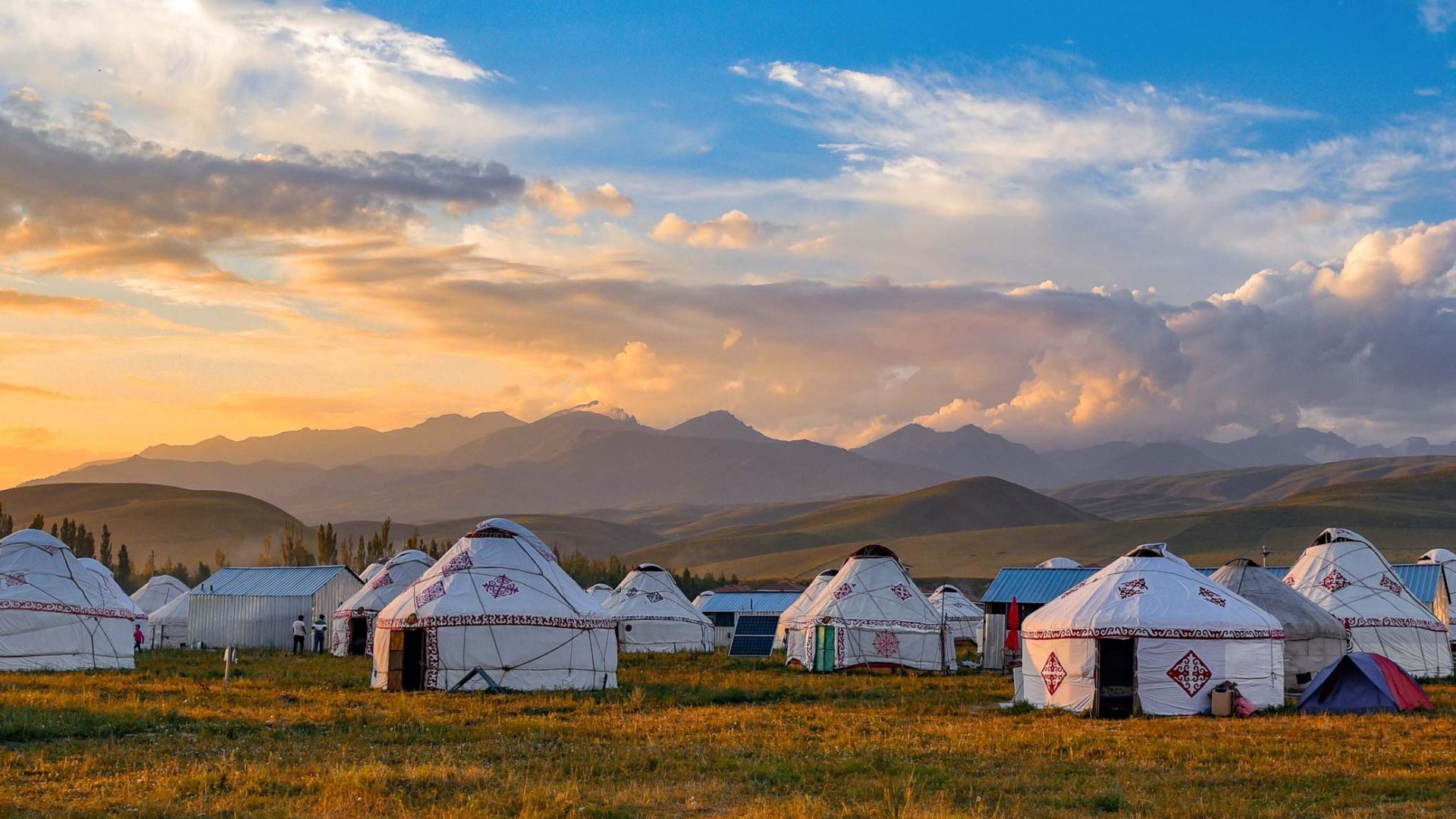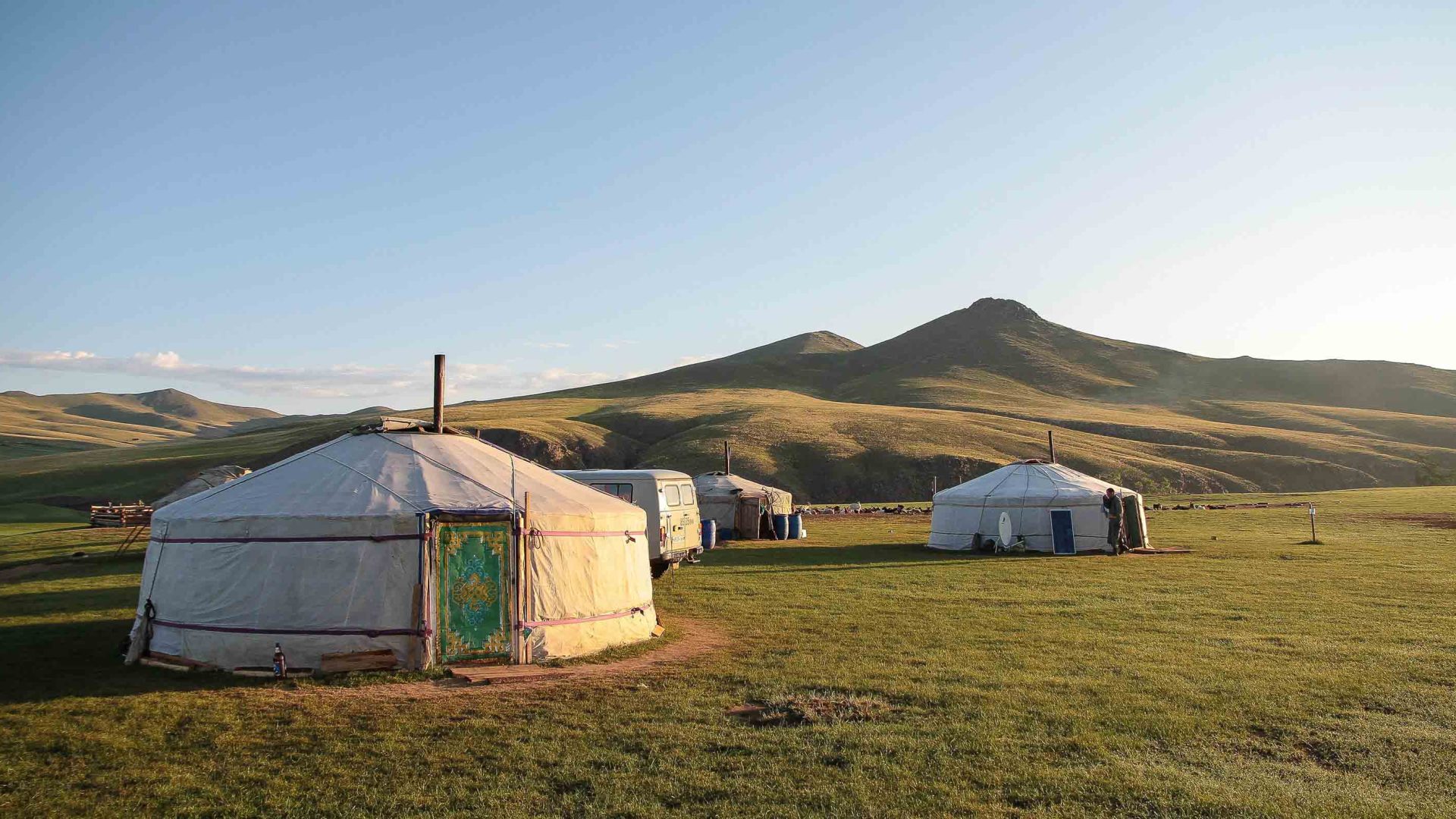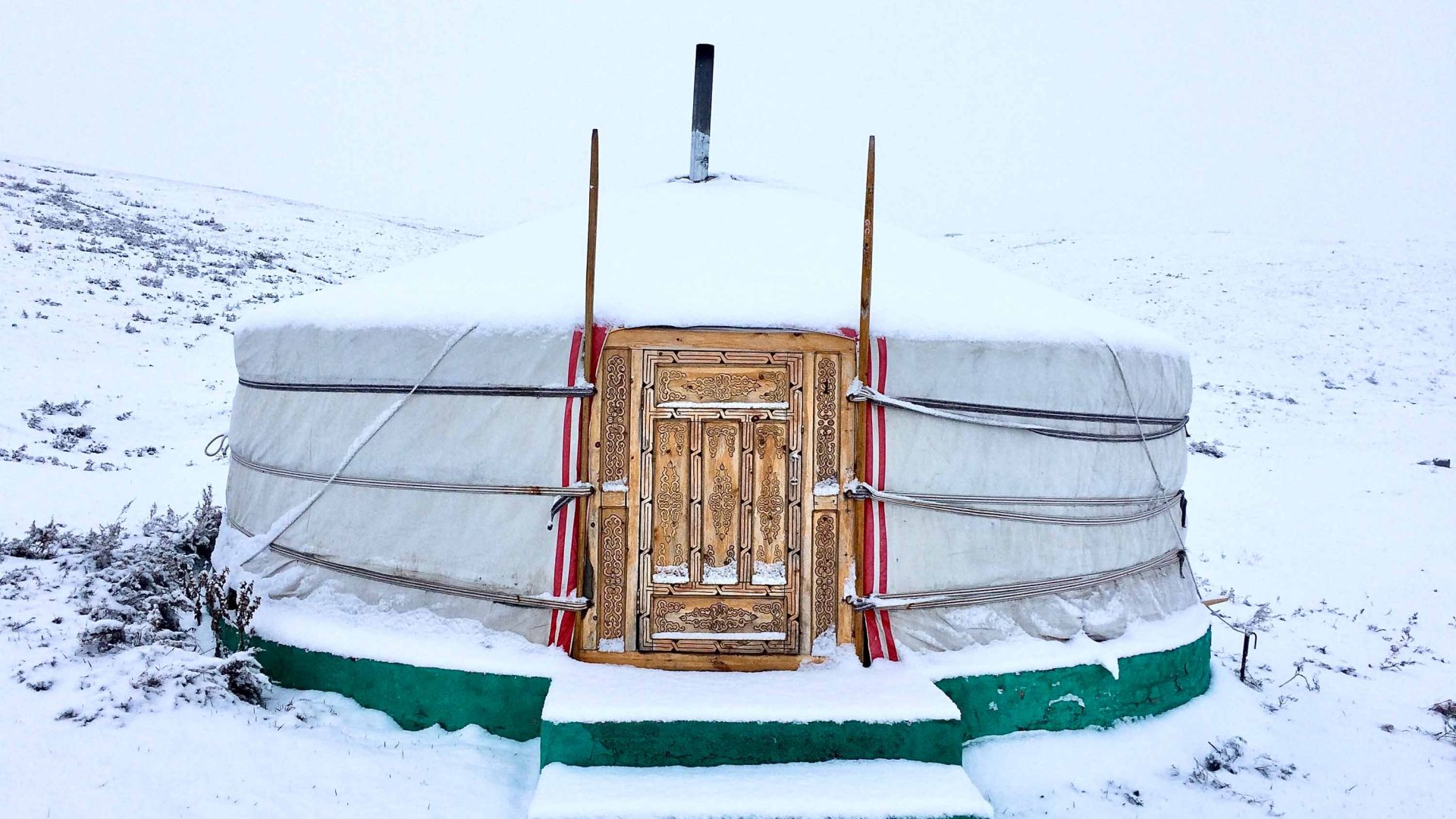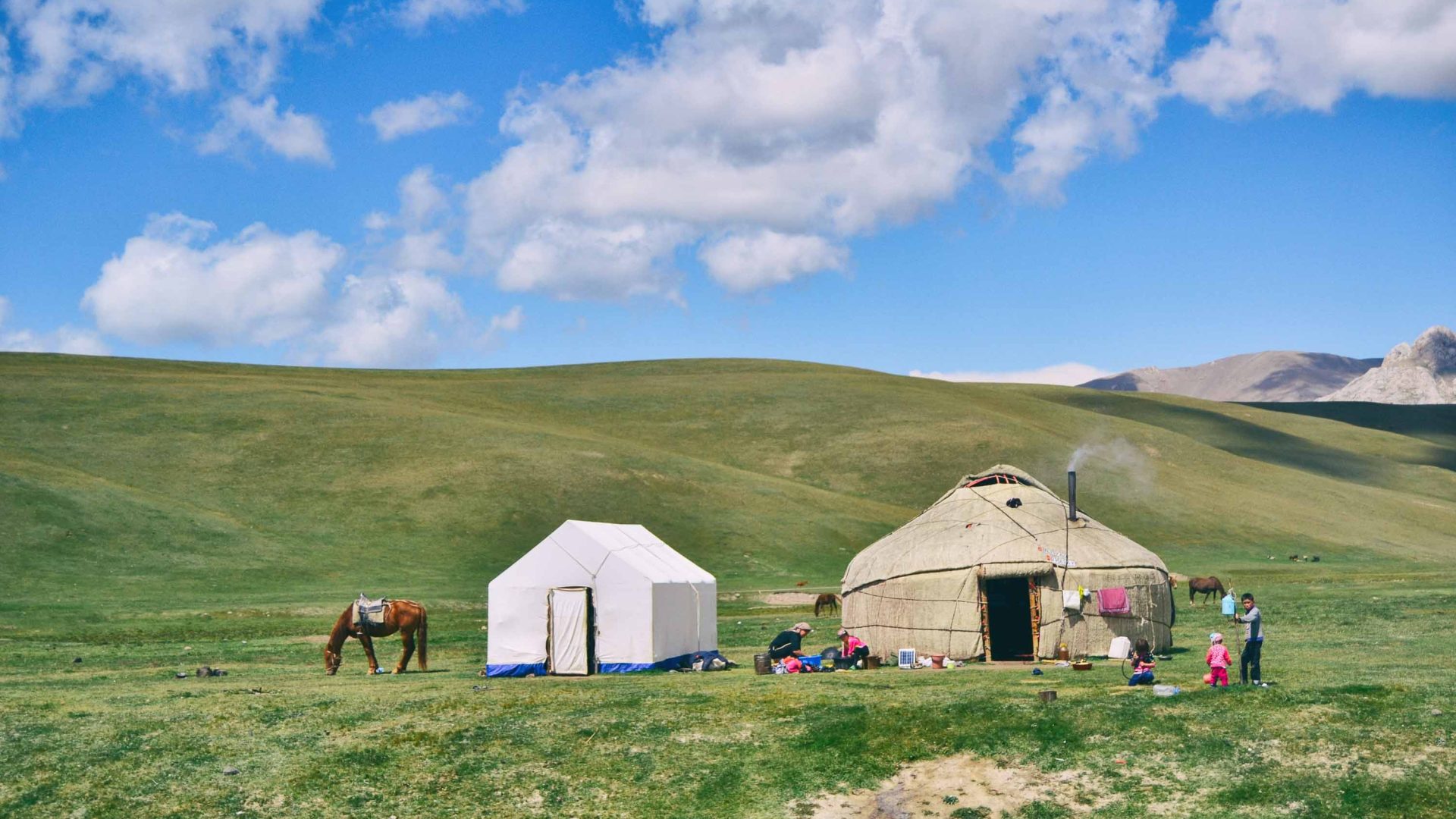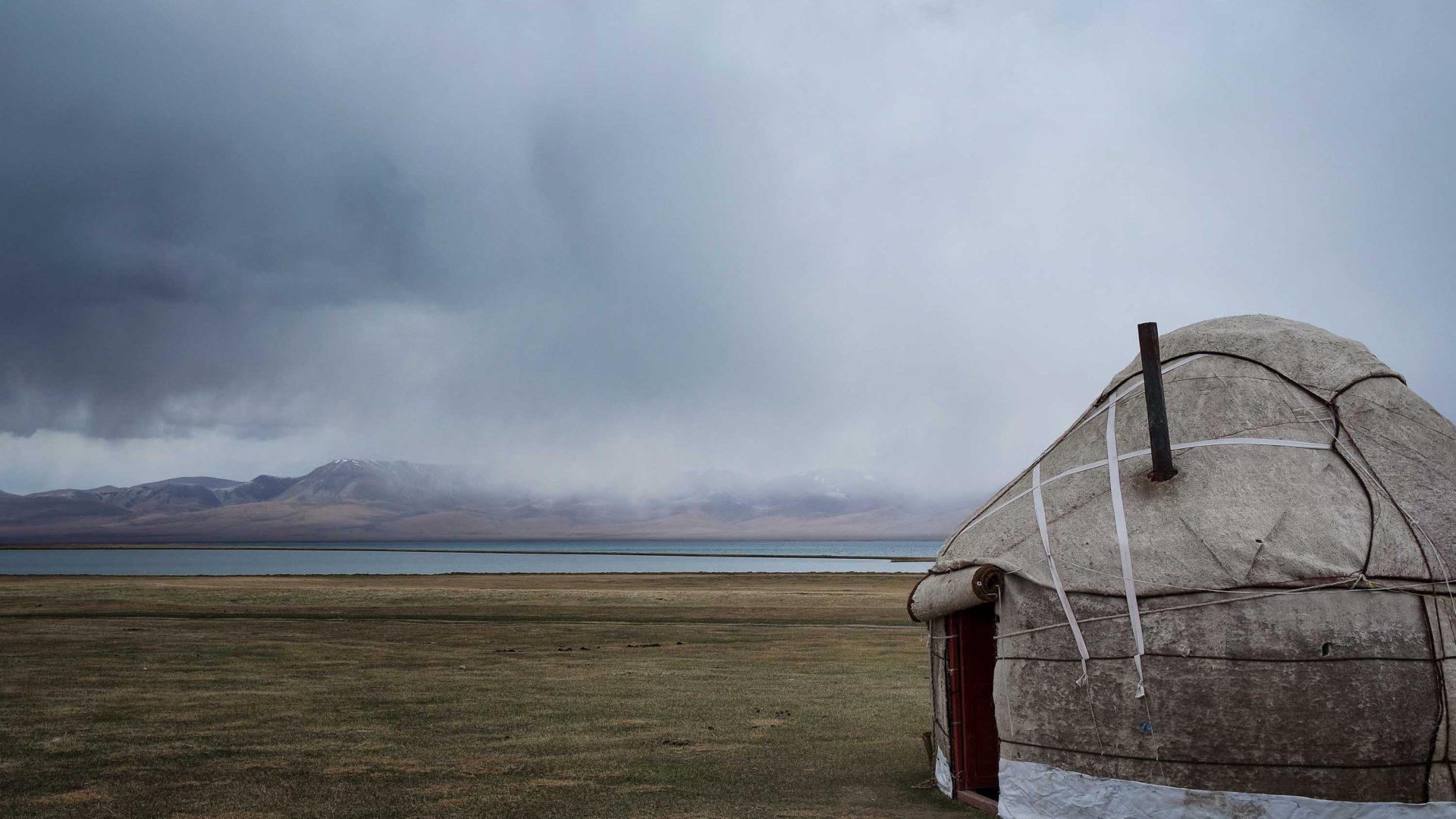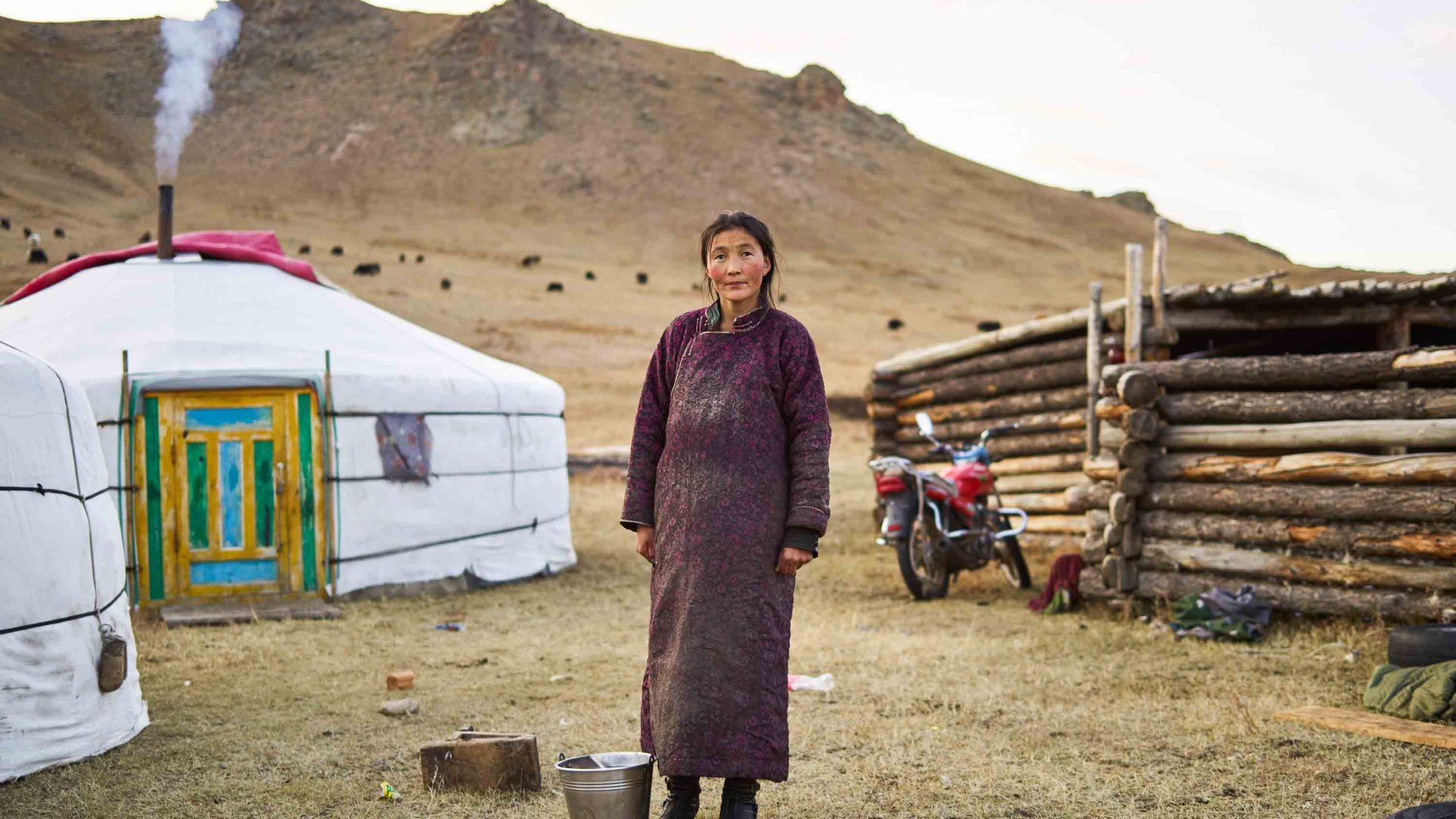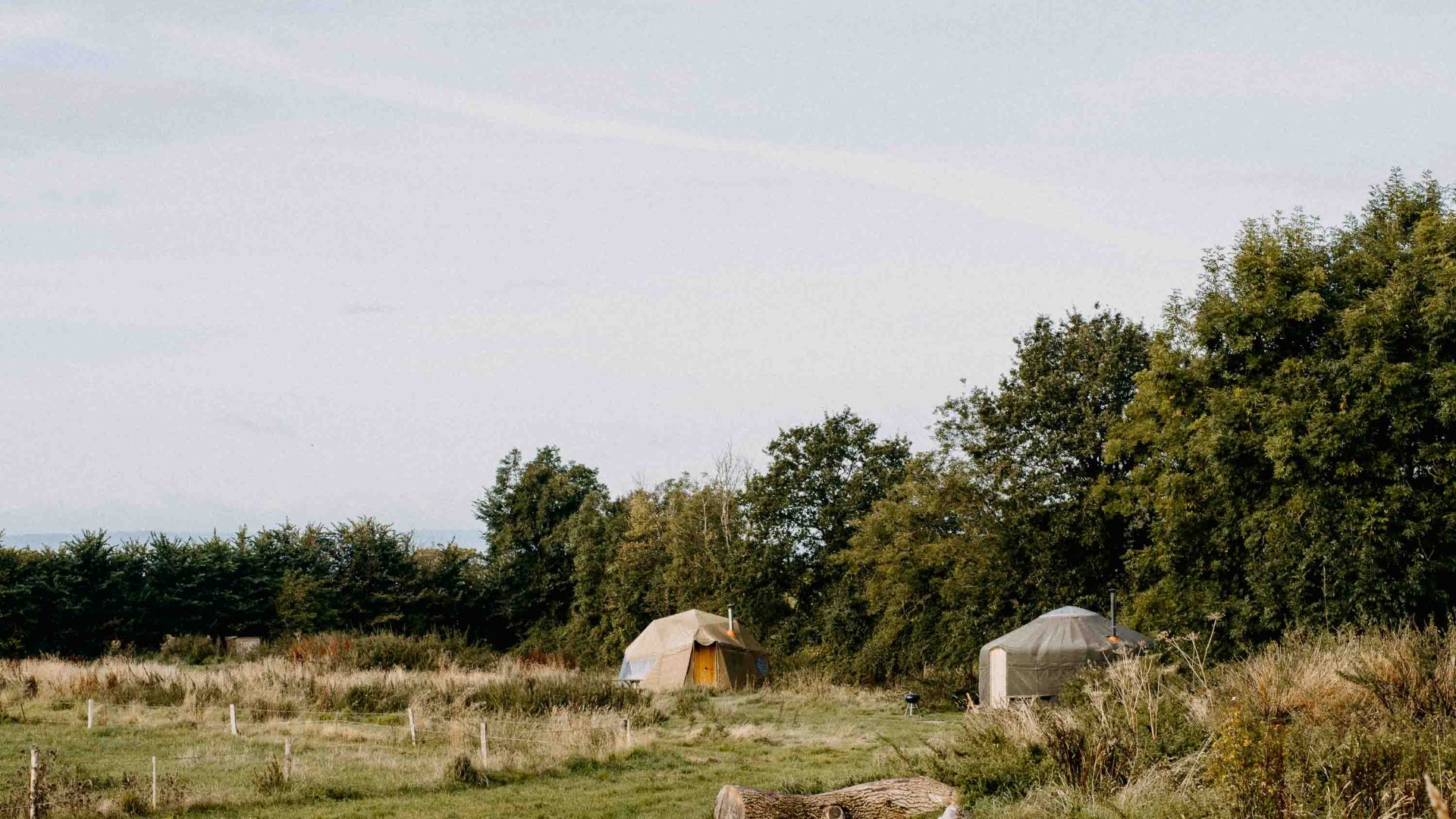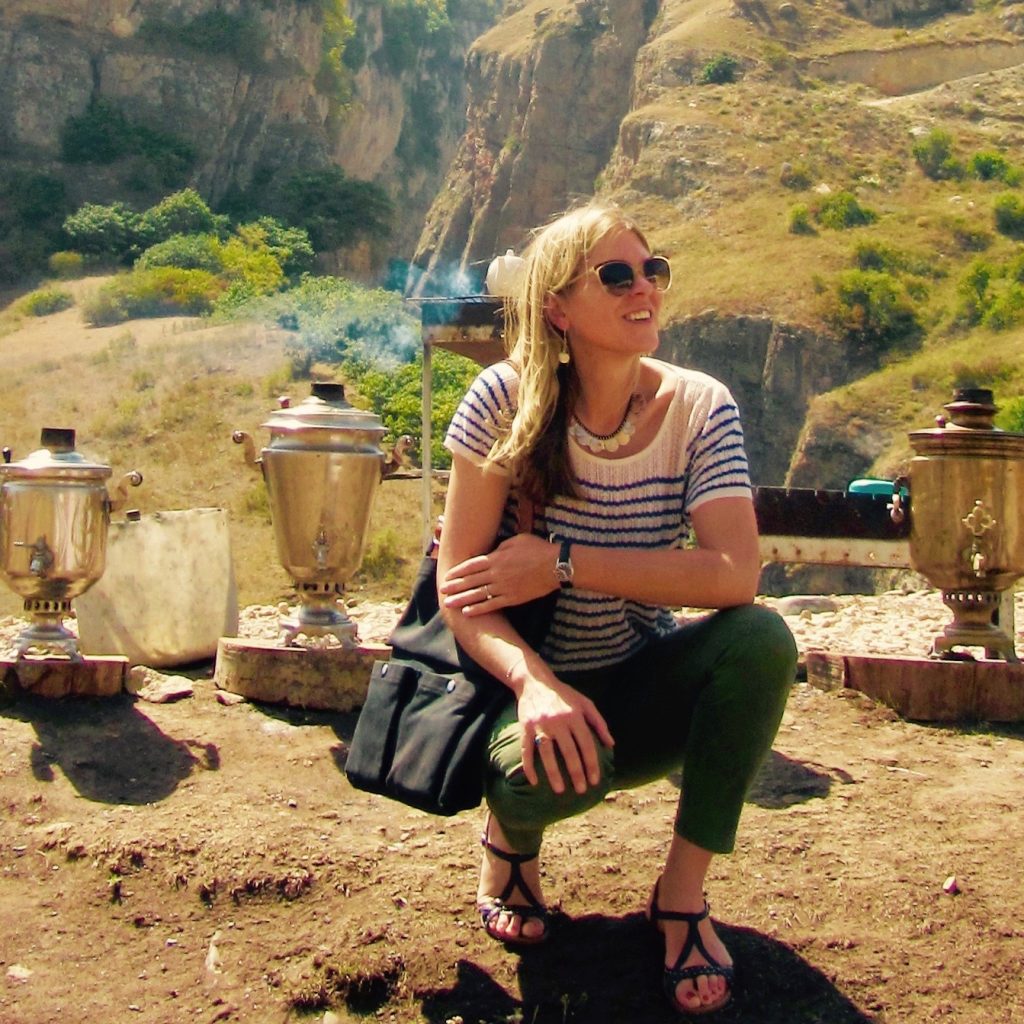Nearly 6,000 miles west, Yurt Specialists is a family-operated business based in the small residential area of Risinghurst in Oxford, England, bringing traditionally crafted yurts to the UK for the past three decades—albeit with a few updates. “The skin of yurt—the actual canvas we use—is different to what they would use in Inner Mongolia, which has a very dry environment. We use a special type of canvas called polycanvas, which is essentially much faster to dry and therefore needed for the rainy Western European climate,” reveals O’Connor.
Other adaptations include raising the height of the walls to accommodate slightly taller people, installing groundsheets to prevent dampness, and adding windows. “You won’t find windows in most yurts in the Far East, but in the UK, we need as much light as we can get. We haven’t changed the fundamental structure, of course, and we haven’t changed how that structure is made either—it’s just the canvas and a few extras that make it more adapted to the UK.”
The simple yet effective design of a yurt, he says, is key in the steadily growing demand. “The structure is designed so that the weight of it is the strength of it—it’s all held together by tension bands. They’re much stronger than tents, yet you can build them like a tent. You could take them down, you can bring them somewhere else, you can live in them in all sorts of temperatures. It’s no wonder that our customer base varies wildly.”
O’Connor’s clients span farmers, forest schools, healing practitioners, camping and glamping sites, gardening enthusiasts, and those living off the grid full-time; even musicians are catching on, owing to the soft acoustics within a yurt.
Today, it seems. there’s no such thing as a stereotypical yurt buyer. As for their intangible appeal? “In England, we would describe them as quirky,” he chuckles. “They’re a little bit exotic, a little bit different from the norm. And certainly, in Europe, we have romantic ideals of the Mongolian lifestyle, so it touches that for a lot of people.”
